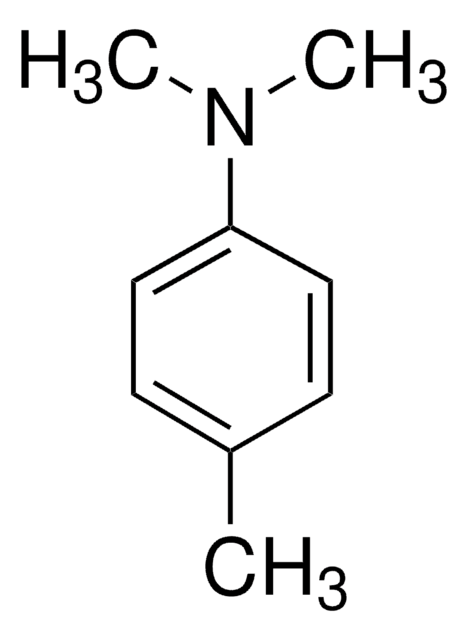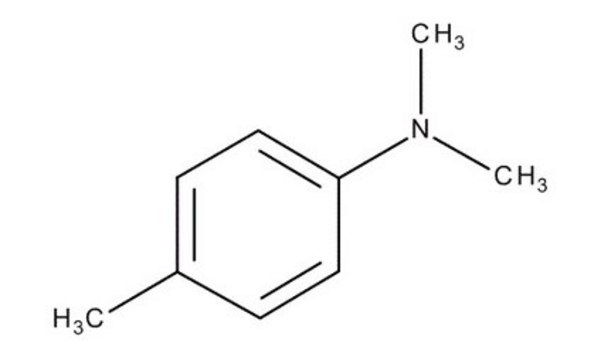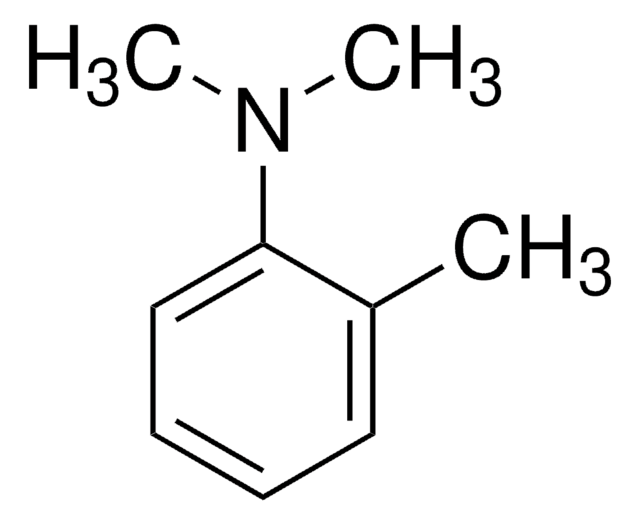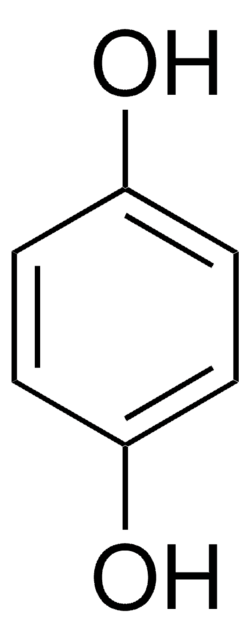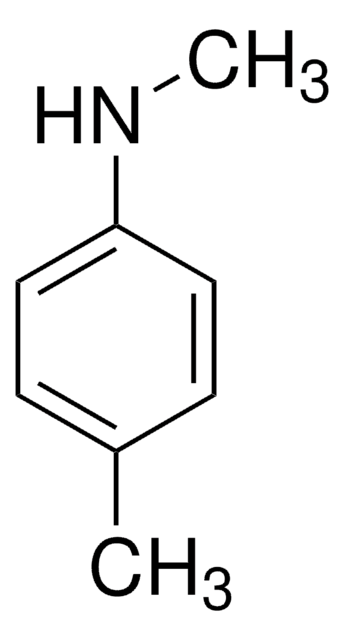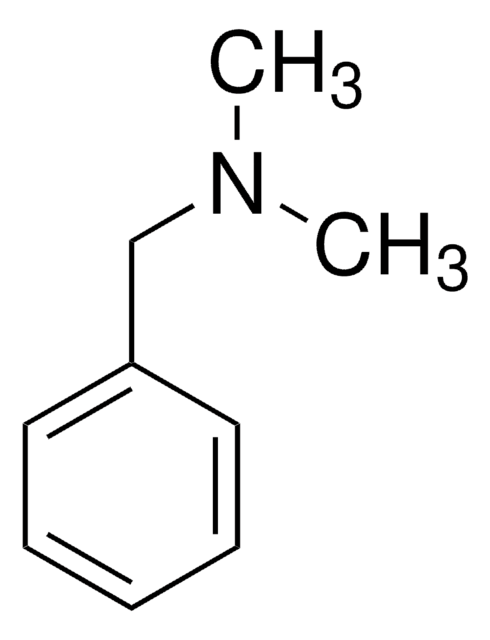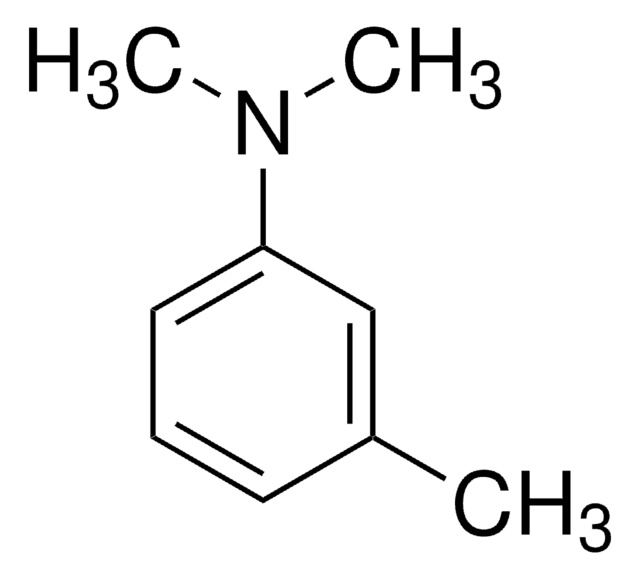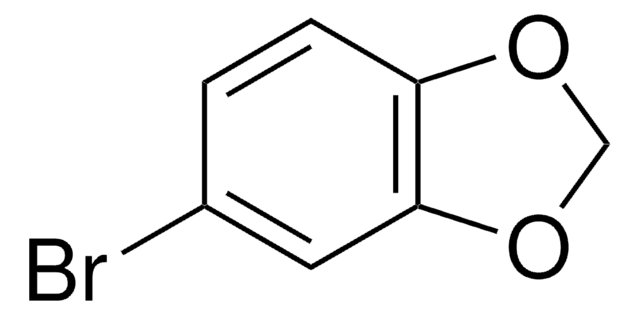50463
4,N,N-Trimethylaniline
puriss., catalyst for peroxide polymerisations, ≥99.0% (GC)
Recommended Products
grade
catalyst for peroxide polymerisations
puriss.
Quality Level
vapor density
>1 (vs air)
Assay
≥99.0% (GC)
expl. lim.
7 %
refractive index
n20/D 1.546 (lit.)
n20/D 1.547
bp
211 °C (lit.)
90-92 °C/10 mmHg (lit.)
density
0.937 g/mL at 25 °C (lit.)
SMILES string
CN(C)c1ccc(C)cc1
InChI
1S/C9H13N/c1-8-4-6-9(7-5-8)10(2)3/h4-7H,1-3H3
InChI key
GYVGXEWAOAAJEU-UHFFFAOYSA-N
Looking for similar products? Visit Product Comparison Guide
Packaging
Caution
Legal Information
replaced by
Signal Word
Danger
Hazard Statements
Precautionary Statements
Hazard Classifications
Acute Tox. 2 Inhalation - Acute Tox. 3 Dermal - Acute Tox. 3 Oral - Aquatic Chronic 3 - Carc. 1B - Repr. 2 - Skin Sens. 1 - STOT RE 2 Oral
Target Organs
Reproductive organs
WGK
WGK 3
Flash Point(F)
168.8 °F
Flash Point(C)
76 °C
Regulatory Information
Certificates of Analysis (COA)
Search for Certificates of Analysis (COA) by entering the products Lot/Batch Number. Lot and Batch Numbers can be found on a product’s label following the words ‘Lot’ or ‘Batch’.
Already Own This Product?
Find documentation for the products that you have recently purchased in the Document Library.
Our team of scientists has experience in all areas of research including Life Science, Material Science, Chemical Synthesis, Chromatography, Analytical and many others.
Contact Technical Service